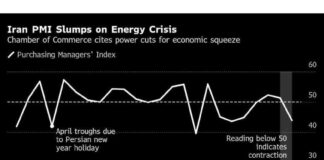The Centre’s Unified Pension System (UPS) has been making headlines recently, with a top official shedding light on the intricacies of the scheme. The official emphasized that the UPS will be funded within the Centre’s fiscal projections, ensuring that pension expenditure will not be deferred. This is due to the contributory nature of the scheme, which will be financed annually.
Fiscal Prudence of the Unified Pension System
“It is fiscally prudent in the sense that we will have to absorb it each year in the Union Budget within our budgeted fiscal deficit,” the official explained. “It is a fully funded contributory scheme, meaning there will be no future burden on subsequent governments. We will pay the estimated liability of 18.5 per cent each year.”
This stands in stark contrast to the old pension system (OPS), which operated on a ‘pay as you go’ basis. Under the UPS, both employee and government contributions will be set at 10 per cent and 18.5 per cent respectively. The increase in government contribution will result in an extra cost of Rs 6,250 crore in the first year, with an additional one-time expenditure of Rs 800 crore for arrears.
Unified Pension System Benefits and Features
The unified system guarantees a 50 per cent assured benefit with retrospective effect, ensuring that all retirees since the introduction of the National Pension System (NPS) can opt for the new scheme. Existing subscribers are also eligible to switch to the UPS, with arrears being provided to all retirees up to March 31, 2025.
Furthermore, even those opting for voluntary retirement service (VRS) are covered under the scheme. The 18.5 per cent increase in contribution has been carefully calculated to accommodate all retirees and ensure a smooth transition to the new system.
Assured pension under the UPS will be based on the default mode of investment pattern regulated by the Pension Fund Regulatory and Development Authority (PFRDA). The individual pension corpus will be fully annuitized, with any shortfall in the benchmark annuity being covered. Employees with a minimum qualifying service of 25 years will be entitled to a full assured pension, while those with lesser service will receive a pro-rata pension.
State Governments and the Unified Pension System
The scheme is not limited to central government employees, as state governments have the option to adopt the UPS. Over 9 million employees, including 2.3 million Central Government employees, 300,000 employees of Central Autonomous Bodies, and 5.6 million state government employees, are expected to benefit from the scheme.
States opting to implement the UPS will be responsible for bearing the financial burden associated with the scheme. While the UPS aims to benefit employees, it also serves to protect the welfare of citizens by being fully funded, thus avoiding any fiscal strain on future generations.
In conclusion, the Unified Pension System represents a significant shift in the way pension benefits are structured and financed. By ensuring full funding and a contributory system, the UPS aims to provide stability and security for retirees while easing the fiscal burden on the government. As more details about the scheme emerge, it will be crucial for employees and stakeholders to carefully consider their options and make informed decisions regarding their pension benefits.






















